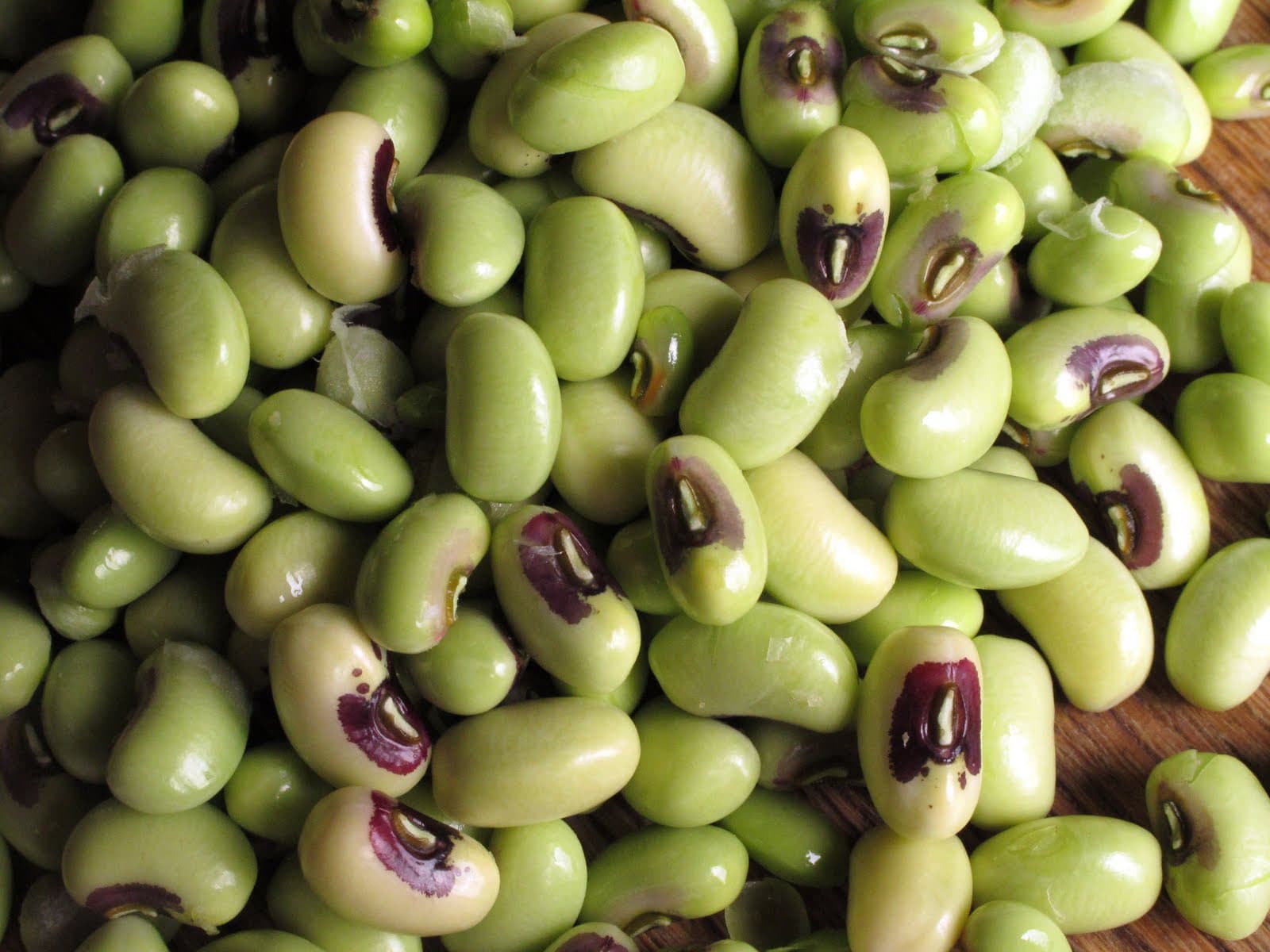
Fresh Black-Eyed Pea Pods, distinguished by their rich taste and meltingly smooth texture, offer a gourmet experience that dried beans simply cannot match. Unlike their starchy dried versions, fresh shell beans boast a creamy consistency and a subtly sweet flavor profile. Robin Taylor divulges his preferred method for savoring these delectable pods, elevating a simple legume to a culinary delight.
Essential Ingredients for the Dish
To recreate this savory dish, you will need:
- 1 pound of Black-Eyed Peas: Trimmed and cut into bite-sized pieces.
- 1 Ham Hock or 4–5 slices of Bacon: Adds a smoky depth of flavor.
- 1 Large Onion: Chopped for a foundational aromatic layer.
- 4 Garlic Cloves: Minced, infusing the dish with pungent notes.
- 1/2 Teaspoon of Salt: Adjust to taste.
- 1/4 Teaspoon of Ground Black Pepper: For a mild spice.
- 1 Cayenne Pepper (optional): Introduces a heating element.
- Water: Sufficient quantity to submerge the ingredients in the pot.
Detailed Preparation Instructions
Begin by heating bacon drippings or butter in a large pot over medium heat. Sauté the onion and garlic until tender, infusing the base with their aromatics. Introduce the ham hock or bacon to the pot, followed by enough water to cover the peas and aromatics. Season with salt, black pepper, and, if desired, cayenne pepper for an additional kick.
Bring the mixture to a boil, skimming the surface as necessary to remove any impurities. Reduce the heat to a gentle simmer, adjusting the seasonings according to your palate. Cover the pot and allow the peas to simmer until they reach your preferred level of tenderness, typically between 45 minutes to an hour.
This preparation method, shared by Robin Taylor, transforms the humble Black-Eyed Pea into a centerpiece dish, demonstrating the unparalleled flavors and textures achievable with fresh produce. Serving as both a testament to traditional cooking techniques and the inherent quality of fresh ingredients, this dish invites us to revisit and appreciate the simple pleasures of home-cooked meals.
Comparative Table: Fresh Black-Eyed Peas vs. Dried
| Feature | Fresh Black-Eyed Peas | Dried Black-Eyed Peas |
|---|---|---|
| Texture | Creamy and tender | Firm and starchy |
| Flavor | Sweet and subtle | Concentrated and earthy |
| Preparation Time | Requires simmering until tender, usually under an hour | Longer soaking and cooking times necessary |
| Nutritional Value | High in vitamins and fiber, with freshness enhancing nutrient retention | Slightly reduced vitamin content due to drying process, but still nutritious |
| Culinary Applications | Best enjoyed in dishes where their creamy texture and delicate flavor can shine | Ideal for dishes that benefit from their firmer texture and richer taste |
The Fiery Allure of Fresh Hot Peppers
In the realm of culinary enhancements, fresh hot peppers stand as a vibrant testament to the power of spice to transform dishes from ordinary to extraordinary. These peppers, ranging from the mildly piquant to the searingly hot, add not only heat but also depth and complexity to a variety of cuisines around the globe. The freshness of these peppers ensures that their capsaicin—the compound responsible for their heat—is at its peak, providing a bright, clean spiciness that dried or powdered versions cannot match.
The use of fresh hot peppers extends beyond mere heat addition; they contribute a spectrum of flavors that can elevate a dish’s taste profile. From the fruity undertones of habaneros to the smoky essence of chipotles, each pepper brings its unique flavor profile to the table. In culinary practices, incorporating fresh hot peppers allows chefs and home cooks alike to experiment with the balance of heat and flavor, crafting dishes that resonate with personal or cultural culinary narratives.
Moreover, fresh hot peppers offer health benefits, being rich in vitamins A and C, as well as bioflavonoids that help fight inflammation and boost the immune system. Their versatility in cooking is unparalleled—they can be minced and added to salsas and sauces, sliced for garnishes, or even stuffed and grilled for a fiery centerpiece.
Embracing fresh hot peppers in cooking not only challenges the palate but also invites an exploration of global cuisines, encouraging a deeper appreciation for the diversity of flavors and traditions that shape our dining experiences. Whether adding a subtle heat to a favorite dish or daring to experiment with the fiery limits of culinary spice, fresh hot peppers promise a journey of discovery, one tantalizing bite at a time.
Conclusion
The choice between fresh and dried Black-Eyed Peas hinges on the desired culinary outcome, with each form bringing its unique attributes to the table. Fresh peas, celebrated for their creamy texture and subtle sweetness, offer a distinct taste experience that enhances dishes like the one shared by Robin Taylor. Dried peas, on the other hand, provide a concentrated flavor and a firmer texture, suitable for recipes that require longer cooking times.
This comparison underscores the versatility of Black-Eyed Peas, encouraging culinary enthusiasts to experiment with both forms to discover the range of flavors and textures they can bring to various dishes. Whether opting for the fresh, tender profile of Robin Taylor’s recipe or the robust, earthy notes of dried peas, Black-Eyed Peas remain a cherished ingredient in kitchens worldwide, offering endless possibilities for creative and nourishing meals.